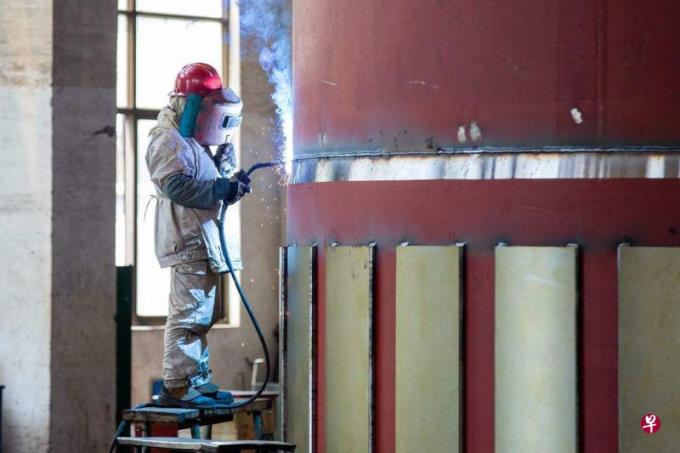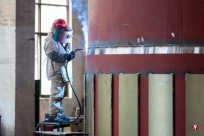
The official procurement manager index (PMI) that measures China's manufacturing activities for the second month is located in the contraction range for the second consecutive month, reaching the lowest record since December last year.Interviewed experts believe that weak domestic and foreign demand has further led to China's weak recovery, the overall economic prosperity level continues to be sluggish, and the unemployment rate will become more severe.
China National Bureau of Statistics on Wednesday (May 31) announced 48.8 in May manufacturing PMI, a decrease of 0.4 percentage points from the previous month, lower than Bloomberg Society's estimated median for economic scientists 49.5EssenceThe PMI index higher than 50 indicates that the manufacturing activity is expanded, and less than 50 indicates atrophy.
Zhao Qinghe, a senior statistician of the Service Industry Investigation Center of the National Bureau of Statistics, interpreted that PMI continued to be located in the contraction range in May, mainly due to the insufficient demand in the manufacturing market, and the release of enterprise capacity was suppressed.
After China began to cancel strict control measures in December last year, the manufacturing PMI bottomed out in January this year, and it rose to 52.6 in February, the highest in the past 11 years.However, the index of China in April has shrunk, reversing China's expansion trend since the first three months of this year.
The manufacturing PMI in May continued the decline in April.From the perspective of sub -item data, the production index and the new order index in May were 49.6, 48.3, a 0.6 and 0.5 percentage points decreased from the previous month.The new export orders dropped from 47.6 to 47.2.The official non -manufacturing PMIs that measure the service industry and construction industry have remained in the expansion range, but the index fell from 56.4 last month to 54.5.
Signs of the slowdown in China's economic recovery caused the Hang Seng Index to fall as high as 3%on Wednesday, and fell by 1.9%at the close.The index fell 19.6%from the high point on January 27, which was only one step away from the 20%threshold of the bear market.The Hang Seng China Enterprise Index also fell 1.92%.The exchange rate of offshore RMB against the US dollar also fell below the 7.1 mark on Wednesday, reaching the lowest level since the end of November last year.
Wang Jun, chief economist of Huatai Assets Wang Jun, pointed out in an interview with Lianhe Morning Post that almost all the sub -indexes of the manufacturing PMI in May are downward trends, reflecting the decline in prices and internal and external demand, and further highlights that China's economic recovery momentum is being in the same time.Weaken.
Lu Ting, the chief Chinese economist of Nomura International, also pointed out in a report that a larger contraction of the manufacturing PMI shows that the risk of manufacturing spiral decline is "becoming more realistic."
Wang Jun said that in addition to manufacturing, other economic data in April in China, such as retail sales, industrial added value, fixed asset investment, etc., reflect the common problems of weak demand and make the level of economic prosperity at a downturn.
China's youth unemployment rate rose 20%in April, writing a record high.Wang Jun judged that with the continuous desire of China's economy, insufficient demand will have an impact on the recruitment capacity of the manufacturing and service industry, making the unemployment rate more serious.
Wang Jun believes that China's decision -making level attaches great importance to these issues, and will be introduced to more targeted fiscal and monetary policy adjustments in the future. Through more policy tools that are beneficial to incremental, including interest rate cuts and selling more bonds to stabilize the economy to stabilize the economyThe market.
The People's Bank of China also pointed out in the first quarter of 2023, released by the People's Bank of China in mid -May this year that the central bank will "focus on supporting domestic demand and provide strong and stable support for the real economy."
According to Bloomberg, a member of a familiar situation said that officials are considering providing new tax incentives worth hundreds of billions of yuan worth hundreds of billions of yuan.
Wang Jun believes that considering that the PMI of China's manufacturing PMI has fallen for three consecutive months, the probability of returning to the critical point in the short term is quite low.EssenceHowever, it is possible to rebound slightly at the current low.



